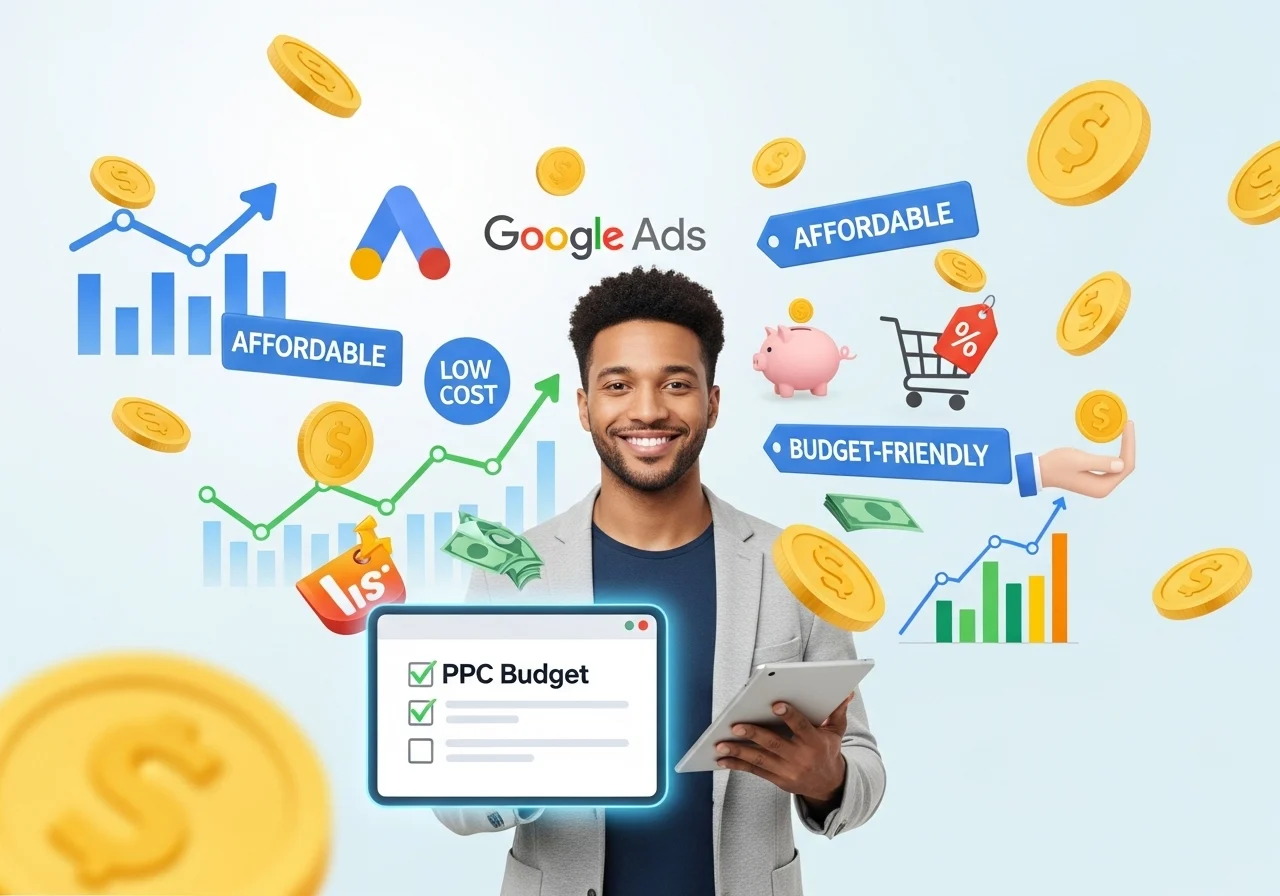Google Ads can be a powerful growth engine for small local businesses. It puts you directly in front of customers ready to buy—or at least visit. But go in blind, and you’ll hemorrhage ad spend fast. Let’s dig into why it works, when it doesn’t, and how to make sure your campaigns deliver real value.
1. Why Google Ads Can Work for Local Businesses
a. Intent-Driven Traffic
Search ads are different from social ads or display — you’re not interrupting. You’re showing up exactly when someone types queries like “taco place near me,” “emergency plumber,” or “dental clinic North Carolina.” That’s high buying intent right there.
b. Hyperlocal Targeting
You can zone in with zip-code specificity, city targeting, or even a precise radius around your location. That means every rupee you spend reaches people who are actually nearby and likely to convert.
c. Budget Discipline & Flexibility
Google lets you set daily budgets, max CPC bids, and pause anytime. Start small, test ad variations, and scale what works—without fear of overspending.
d. Speed to Traffic
Unlike SEO, which takes months to gain traction, Google Ads can start driving calls, walk-ins, and form submissions in days—if set up right.
2. When Google Ads Aren’t Worth It
a. No Cost Visibility
If you don’t know your profit margins or what a new customer is worth, you can’t set proper bid limits or measure ROI. The result? You’re playing with fire.
b. Weak Website or Landing Pages
Your ad might be compelling—but if it links to a slow-loading, cluttered homepage, you’ve just paid for a wasted click.
c. Poor Targeting
If you don’t tighten your audience—using negative keywords, precise geo-locational filters, and structured ad groups—you’ll burn budget on irrelevant clicks.
d. No Tracking or Optimization
Launching a campaign without conversion tracking or regular tweaks is a recipe for disaster. PPC is not “set it and forget it.”
3. Real-World Example
Imagine you operate a local HVAC business. With a targeted campaign for “AC repair North Carolina,” you craft a click-to-call ad. That ad links to a stripped-down landing page with hours, phone number, pricing snippet, and easy booking.
What could come next:
- Multiple calls within hours.
- Within days: better qualified leads than you’d get with broad Facebook ads.
Now flip it: same ad, but you send visitors to a generic homepage that lacks trust signals or urgency—and loads slowly. Your cost-per-call balloons, and campaign ROI tanks.
4. When Google Ads Are Worth It
This tool becomes worth its weight in gold if:
- You understand your customer value and margins.
- You’ve set up proper tracking—e.g. Google Analytics goals or call tracking.
- Your landing pages are tuned for conversions (clear CTA, mobile speed, trust elements).
- You—or someone competent—actively manage and optimize the campaign (pause bad keywords, test new ad copy, refine bids).
- You use hyperlocal strategies and negative keywords to control spend.
5. Measuring True Value: Key Metrics to Watch
| Metric | What It Tells You |
| Cost per Conversion | Are you paying too much for leads or sales? |
| Conversion Rate | Is your landing page doing its job? |
| Click-Through Rate | Does your ad speak the right language to your audience? |
| ROAS (Return on Ad Spend) | Are you making back more than you’re spending? |
| Impression Share | How much of the local search volume are you capturing? |
6. Google Ads vs Other Channels
- Local SEO / Organic Search: Builds lasting traffic, but can take months/years to rank.
- Facebook/Instagram Ads: Great for awareness, not so much for immediate demand-driven actions.
- Flyers, Radio, Word of Mouth: Can still work—especially if your margins are high—but they have limited tracking, targeting, and real-time flexibility.
Google Ads fills the gap: intent-driven, precisely targeted, measurable, and highly scalable.
7. The Anatomy of a Smart Local PPC Campaign
- Campaign Segmentation: Separate campaigns for “Emergency repair,” “Upgrades,” “Maintenance,” etc.
- Location-Based Bid Adjustments: Increase bids closer to your store, lower them farther out.
- Ad Extensions: Use call extensions, location pins, structured snippets to increase SERP real estate.
- Negative Keywords: Block irrelevant or low-intent queries (e.g., “free,” “cheap quotes,” “DIY”).
- Bid Strategy: Use CPA or ROAS targets if you have enough conversion history—otherwise, manual with tight caps.
- Ongoing Optimization: Weekly performance reviews, A/B testing ad copy, refining keywords, and reallocating budgets.
8. Summary: Is It Worth It?
Yes—Google Ads is absolutely worth it for local businesses that:
- Know their numbers.
- Have decent or better conversion-capable assets.
- Add strategy, care, and consistent optimization.
- Use targeting wisely.
- Track ROI, not just clicks.
Skip those elements, and you’ll pay for clicks with zero return.
9. Want to See If It Makes Sense for Your Business?
If you share:
- Your average customer value or margin.
- What your site or landing page looks like.
- How much you’re thinking of spending.
- Your current marketing funnel setup (phone, booking form, walk-in, etc.).
We can help you model an estimated ROAS scenario—or even sketch out an initial keyword strategy and funnel.
Connect with us today or schedule a call to discuss your paid advertising needs.

